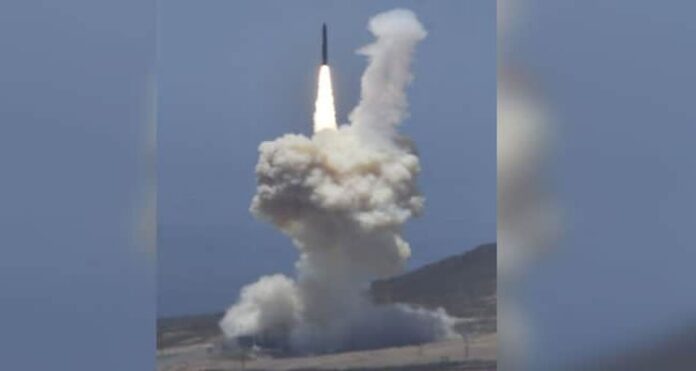| Translate This News In |
|---|
The US military has canceled a test of its Minuteman III missile system that it had planned only to postpone in order to reduce nuclear tensions with Russia during the Ukraine conflict, the Air Force said on Friday. The Pentagon first announced a postponement of the test on March 2 after Russia declared its nuclear forces on high alert. Washington stated at the time that it was critical for both the US and Russia to “bear in mind the risk of miscalculation and take steps to reduce those risks.” However, it had publicly stated that it only intended to postpone the test “a little bit,” not cancel it. According to Air Force spokesperson Ann Stefanek, the decision to cancel the LGM-30G Minuteman III missile test was made for the same reasons as when it was first postponed. The next Minuteman III test is planned for later this year.
“The Air Force is confident in the willingness of the United States’ strategic forces,” Stefanek said.
Changing the testing schedule for America’s ICBM force can be contentious. In March, US Senator Jim Inhofe, the top Republican on the Senate Armed Services Committee, expressed frustration over the postponement of a test he said was critical to ensuring America’s nuclear deterrent remained effective.
Jeffrey Lewis, a missile scientist at the James Martin Center for Nonproliferation Studies (CNS), downplayed the significance of the findings.
“There’s a value to doing the tests, but I don’t think missing one test is a big deal in the grand scheme of things,” Lewis said, adding that the Minuteman III was extremely reliable.
The nuclear-capable Minuteman III is an important part of the United States military’s strategic arsenal, with a range of more than 6,000 miles (9,660 km) and a top speed of approximately 15,000 miles per hour (24,000 kph).
Missiles are launched from hardened underground silos by launch crews.
Russian President Vladimir Putin stated in February that his country’s nuclear forces should be placed on high alert, raising fears that Russia’s invasion of Ukraine could result in nuclear war. However, US officials have stated that they see no reason to change Washington’s nuclear alert levels at this time.
After the Cold War that divided the world for much of the twentieth century, pitting the West against the Soviet Union and its allies, Russia and the United States have by far the largest arsenals of nuclear warheads.
Russia announced earlier on Friday that it would help bolster its western borders with Europe militarily.


















